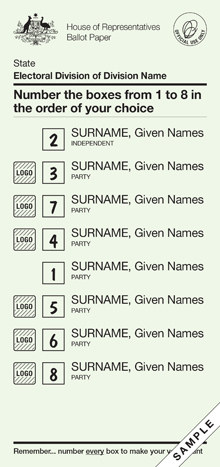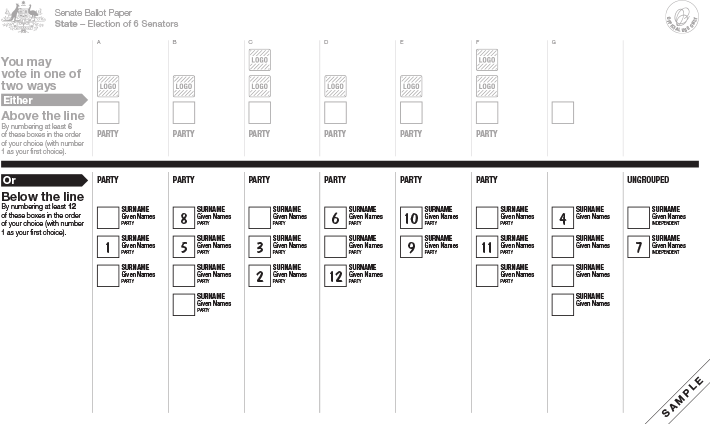Even if you're just there to avoid a fine or demolish a democracy sausage sanga on July 2, we're here to make sure your vote counts.
So here is your quick #AusVotes guide to voting so you don't end up confused on Saturday.
When you get to the voting booth you'll be bombarded by signs telling you to vote for a particular party.
There will also be people handing out how-to-vote cards.
If you're set on completely supporting one party and want to give that party completely control over your preferences, grab one of these from a volunteer.
Now you've lined up, had your name crossed off the electoral roll you will be handed two pieces of paper.
The smaller green piece of paper is so you can vote for someone from your local area to represent you in the House of Representatives.
You number this paper one to however many names there are.

For the Labor Party or the Liberal Party to form government they have to win more than half of the 150 seats in the House of Reps (which is a great name for a gym franchise and also the "lower house" of Australian parliament.)
Just a few more choices to make before "onions or no onions?"
The big white piece of paper - literally about a metre long - is to vote for a representative of your state or territory in the senate.
The senate or "upper house" is made up of 76 senators: each elected to represent one of Australia's six states or two territories.
Now you have to choose whether or not to vote above or below the line.
This is where it gets a little confusing but stay with us; you should be able to smell that democracy sausage by now!
If you've voted before, you'll find voting in the senate a little different this time around because a bunch of politicians stayed up all night debating and eventually passing (at 1:30am) reform that abolished party control over senate preference flows.
That basically means now random senators like Ricky Muir, who loves to fling a bit of kangaroo poo around, can't get elected on a bunch of backroom preference deals.
This is bad news if you think that micro parties deserve a chance in the senate but good news if you don't want someone you might not have actually voted for representing you.
Anyway! Above the line you'll find the parties.

This election, voting above the line means numbering at least six boxes above the line for the parties you like.
Technically, you can still just put a lonely number one like last election but why use a little bit of your democratic right when you can use all of it?
This might seem like the faster and simpler option but give you less say on who you want representing you than voting below the line does.
Below the line you'll find the candidates.

Voting below the line takes the control over preferences out of the hands of the parties and allows you to vote for specific politicians.
If you're voting below the line you need to number at least 12 boxes.
But you don't have to stop at 12, heck if you're in NSW you can go up to 150, go nuts!
This is where it pays to do a little research on Saturday morning because some of the party names are designed to trick you.
Maybe you're super healthy (sorry you're probably not motivated by sausages) and like the look of the Health Australia Party?
Well, you'd better make sure you don't like vaccinations or fluoride in your water because they're all about that.
If you love your family you might be drawn towards preferencing Family First?
Great, unless your family likes marriage equality or supports the right to have an abortion.
The main things to remember?
* The green form is for voting in the House of Reps and you need to number all the boxes
* The huge white piece of paper is for voting in the senate
* Number at least six preferences above the line for the senate
* Number at least 12 preferences below the line for the senate
* The sausage should always be diagonal across the bread
* Mustard is for Americans

